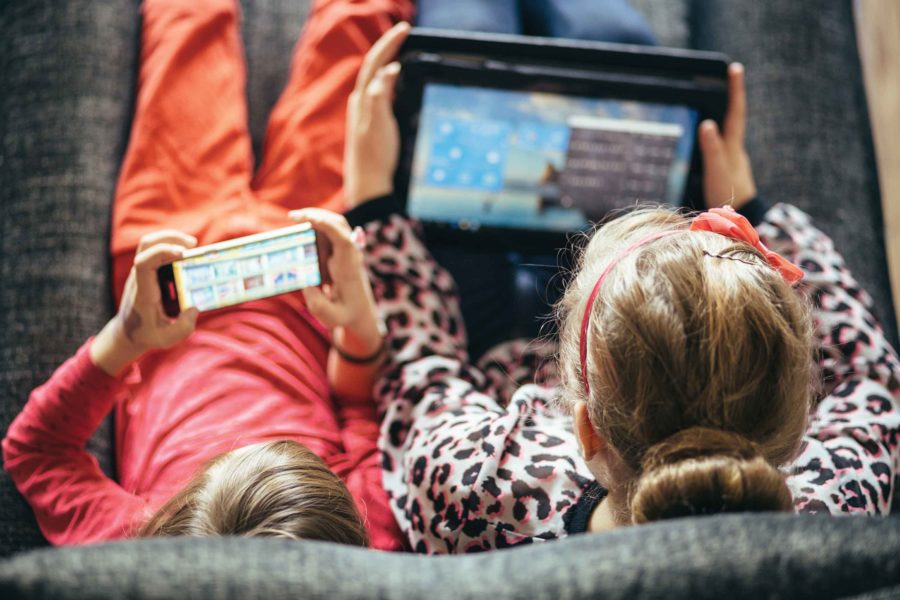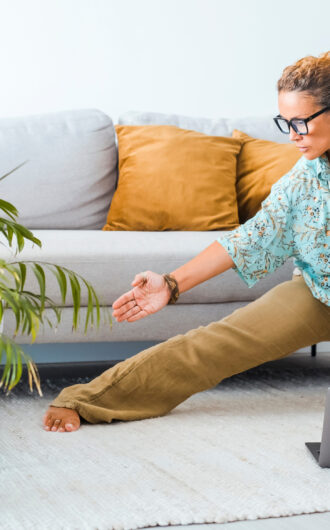Walking by a Fens playground on my way to an evening Red Sox game last summer, I saw a dad with his daughter who looked to be about six years old. She was happily swinging on a swing set while Dad stood just in front, facing her. And, yet, not once did he look at, speak to, or, in any other way, interact with his daughter. Instead, his attention remained glued to his phone.
I’m not judging this dad’s parenting. He just happens to be a perfect illustration of the dilemma parents face in setting limits on their child’s use of technology. Many parents today—by need or by choice—are locked into near constant use of smartphones, tablets and the internet.
According to the Kaiser Foundation, the average adult spends 11 hours a day behind a screen. So much for relying on parent modeling when it comes to teaching kids to curb their tech time!
Like it or not, media and digital devices are an integral part of family life today. Parents are their children’s first and primary tech-use gatekeepers, teaching them how, when and how often to safely access appropriate educational and entertainment content. Jean Twenge, a psychology professor at San Diego State University who studies the impact smartphones and other technology has on kids, advises, “It [technology] should be a tool you use, not a tool that uses you.”
So, is there a problem with you being focused on a smartphone while your child plays happily, independently and safely within arm’s reach? Maybe.
There is a chance your tech use could be harming your relationship with your child. In a 2015 survey by AVG Technologies, one-third of children reported feeling unimportant when their parents looked at their smartphones during meals or when playing together.
According to the American Association of Pediatrics (AAP), these are the risks of too much screen time for school-age children:
- Obesity: Too much time watching screens or playing video games is a risk factor.
- Sleep problems: Although many parents use TV to wind down before bed, screen time before bed can backfire. The light emitted interferes with your brain’s sleep cycle and can lead to insomnia in kids (adults, too).
- Behavior problems: Children who watch TV or use a computer more than two hours per day are more likely to have emotional, social and attention problems.
- Educational problems: School-age children who have TVs in their bedrooms do worse on academic testing. In interviews and data from 11,000 children aged 9 and 10 years old enrolled in a decade-long National Institute for Health study, kids who spent more than two hours a day on screens got lower scores on thinking and language tests.
- Violence: Exposure to violent TV shows, movies, music and video games can cause children to become desensitized. Eventually, they may use violence to solve problems and imitate what they see on TV, according to the American Academy of Child and Adolescent Psychiatry.
How much is too much? That depends on your family values and your child’s interests. The AAP advises parents to establish a Personalized Family Media Use Plan incorporating the following:
- For school-age children, place consistent limits use and the types of media used — making sure technology use doesn’t take the place of adequate sleep, physical activity and other behaviors essential to health and social development.
- Designate media-free times together, such as dinner or driving, as well as media-free locations at home, such as bedrooms.
- Have ongoing communication about online citizenship and safety, including how to treat others with respect online. Make sure you know how your child is using tech, and participate in their screen-related interests just as you do in their offline interests and social interactions.
Real face time with family, friends and teachers should remain first and foremost for your child’s healthy learning and development. If you think your child (or family) has slipped into unhealthy tech-use territory, going off grid as a family with a digital detox — such as a screen-free night once a week or unplugging for a day one weekend a month — could be good for everyone’s physical and emotional health.



 3 min read
3 min read



